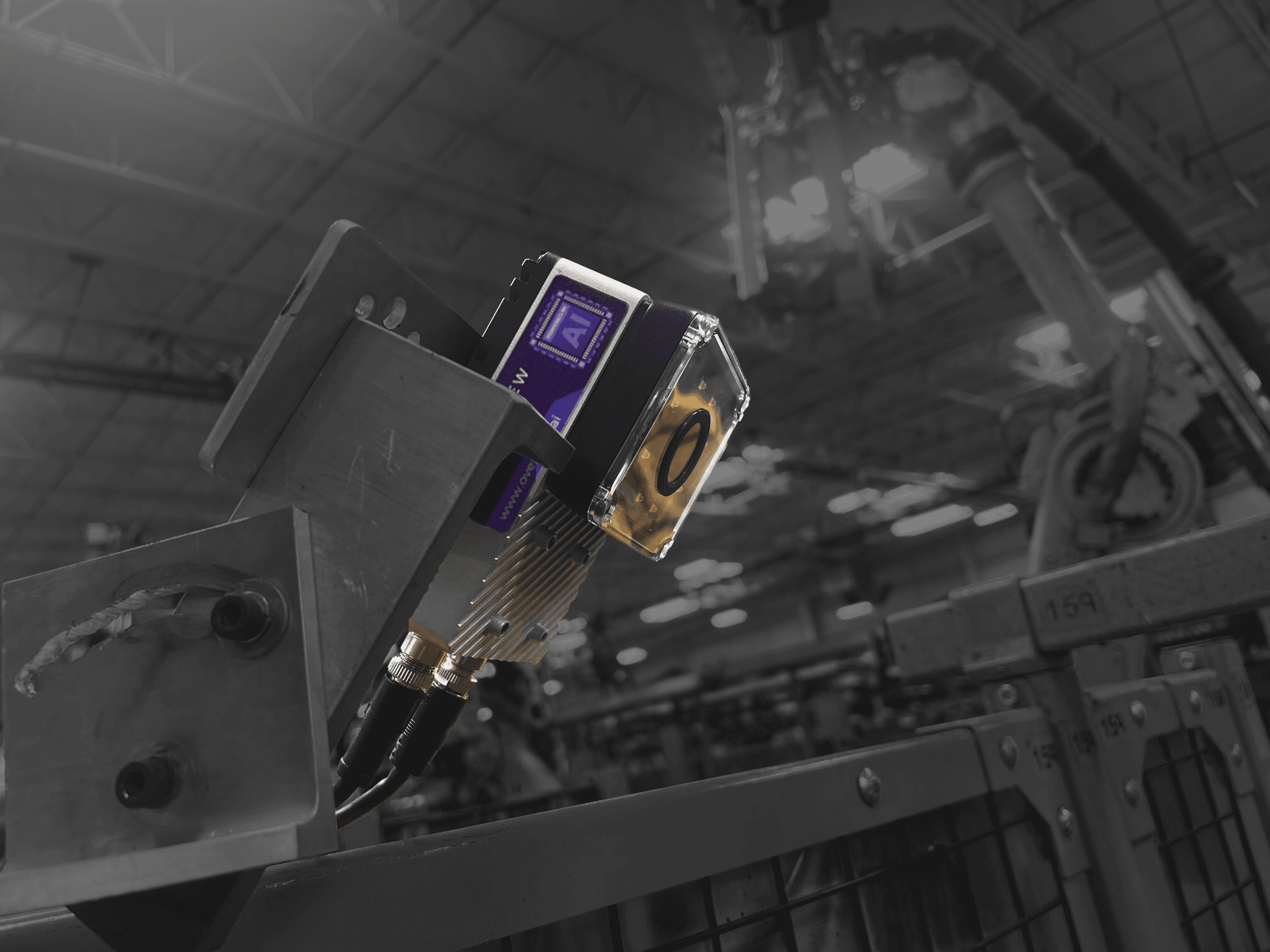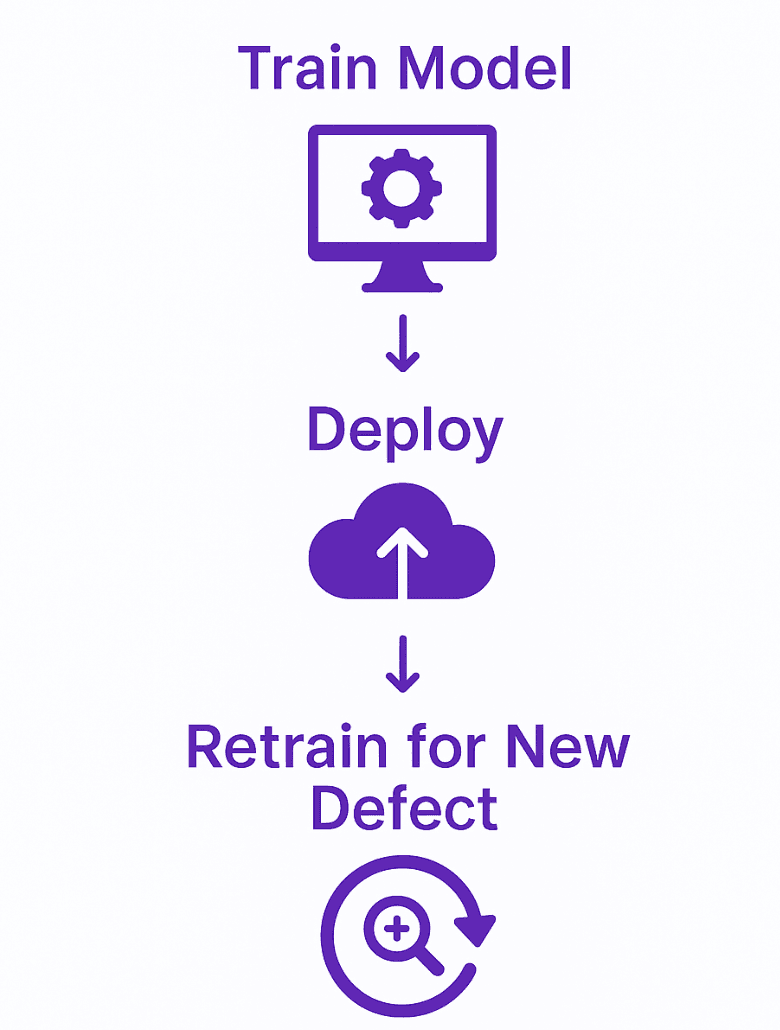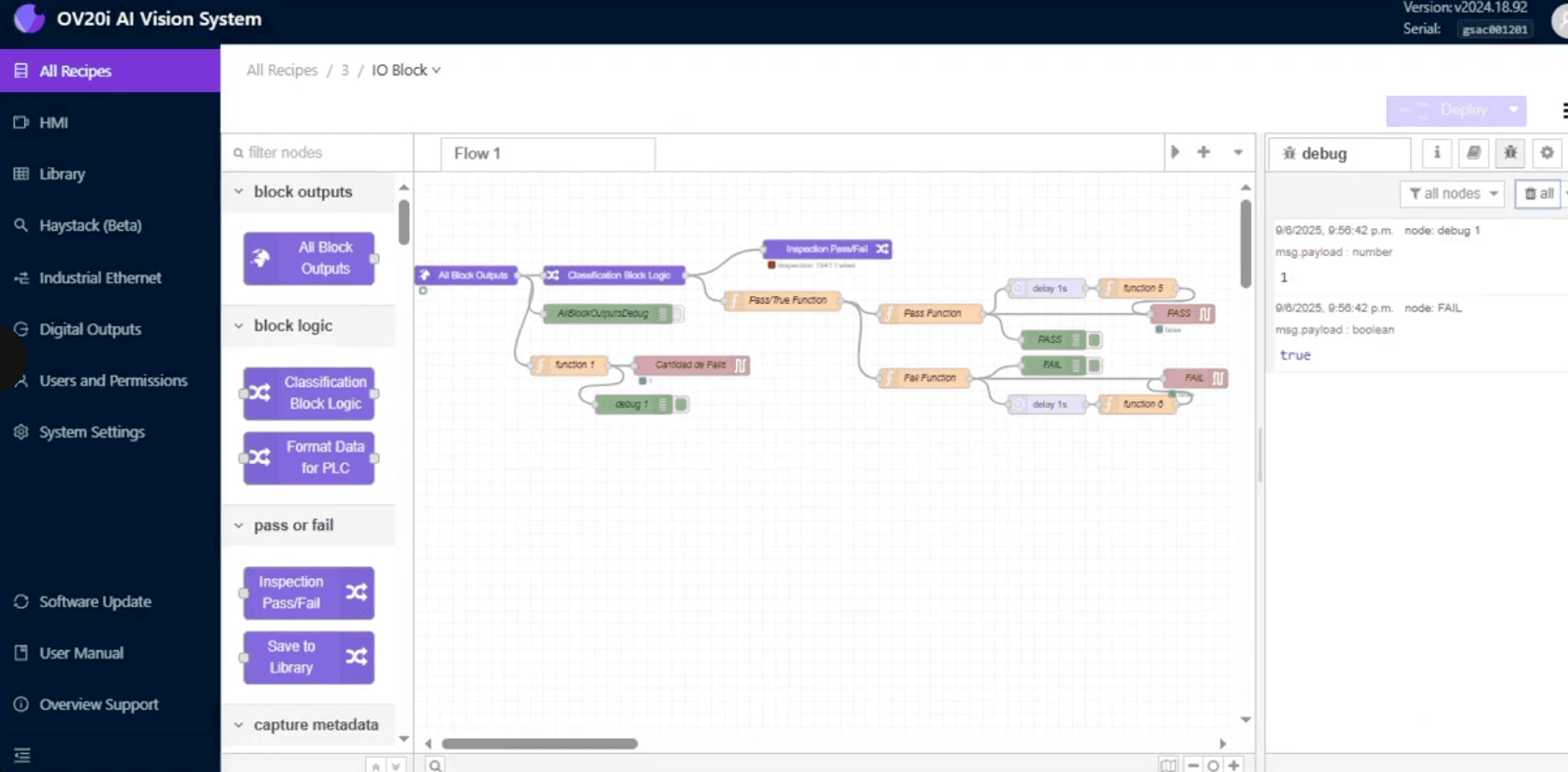Fast Implementation,
Faster Payback
Deploy production systems in days. Train models in hours. Achieve ROI in weeks—not quarters. No vision expertise required.

Production-grade models with as few as 5 images
Full system operational on production line
Up to 75% cost reduction vs. manual inspection
No-Code Environment for Fast Results
Create inspection recipes in as few as 1 hour. Manufacturing engineers configure systems—no computer vision specialists required.
Capture Training Images
Collect as few as 5 representative images under actual production conditions. No studio setup. No elaborate staging. Real parts, real lighting.
Label Defects Intuitively
Draw bounding boxes or segmentation masks directly in the browser. No specialized annotation software. No training required.
Configure Augmentation
Set rotation, brightness, position parameters. The system generates hundreds of synthetic training variations automatically.
Train & Deploy in Under an Hour
Hit train. The model learns. Deploy to production. No export/import. No IT tickets. No waiting.
Retrain for New Defects and Edge Cases
Add new training examples and retrain. Models improve continuously as production evolves.

Data Augmentation: The Secret Weapon
Train accurate models with 10-50 images instead of hundreds. Advanced augmentation generates synthetic variations that teach models to handle real-world variability.
What is Data Augmentation?
The process of creating synthetic training data by transforming existing images. Change contrast, rotate parts, adjust brightness—the model learns to recognize defects regardless of these variations.
Example: From 50 real images, generate 500 augmented variations. The model learns patterns that generalize across lighting shifts, position errors, and environmental changes.
Fewer images required
50 images with augmentation = 500+ without
Generalization
Models handle real-world variation robustly
Random Planckian Jitter
Mimics white balance changes from different lighting conditions. Teaches models to detect defects regardless of ambient light color temperature.
Random Blur
Simulates motion blur from fast-moving production lines. Ensures defects are caught even at high takt times with slight camera vibration.
Random Affine
Accounts for triggering errors, part positioning variance, and fixture tolerance. Rotates, scales, and translates images to match real production drift.
Why Augmentation Works
Better Generalization
Models learn representations invariant to color, location, sharpness, size, and orientation changes.
Prevents Overfitting
Acts as regularization. Models can't memorize specific examples—they must learn general patterns.
Expands Test Coverage
Generate more test samples to evaluate model performance under varied conditions before deployment.
Real-World Case Study
Compare model performance on 100 real images vs. 100 real + 900 augmented images:
100 real images only
Perfect score—but you can't find improvement opportunities. Model may be overfitting.
100 real + 900 augmented
Reveals edge cases. Now you know where to improve. Add targeted training examples and retrain.
Configure with Node-RED & Custom Dashboards
Manufacturing engineers build custom workflows and dashboards—no proprietary tools required.
Node-RED for PLC Integration
Visual programming interface connects AI vision to existing automation. Drag and drop logic blocks to create custom inspection workflows.
- Parse PLC messages and route inspection results
- Trigger alarms, reject mechanisms, data logging
- Native support for EthernetIP, Profinet, Modbus TCP
Custom Dashboards (HTML/CSS/JS)
Build role-specific interfaces using standard web technologies. Operators see what they need. Engineers see what they need. No compromise.
- Real-time inspection statistics and trends
- Defect image galleries with filtering
- Export data to ERP/MES systems via REST API

Ready to Deploy in Days Instead of Months?
See how manufacturing teams train accurate models in under 1 hour and achieve positive ROI within weeks.
Part of the Overview.ai rapid deployment platform